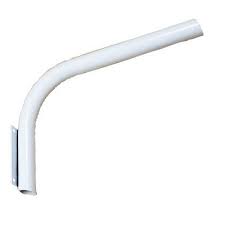
Streetlight arms are components of streetlight systems that holds the light fixture at a specific height and angle. It is also known as a streetlight bracket o a streetlight pole arm. A streetlight arm is the extended horizontal portion that extends outward from the vertical pole or supporting structure. Its main purpose is to provide a platform for mounting the streetlight fixture. It also provides sufficient clearance and reach to properly position the light fixture over the road or sidewalk. A streetlight arm is from materials such as steel, aluminum or other metals. They help withstand outdoor conditions and support the weight of the light fixture.
Components of the streetlight arm
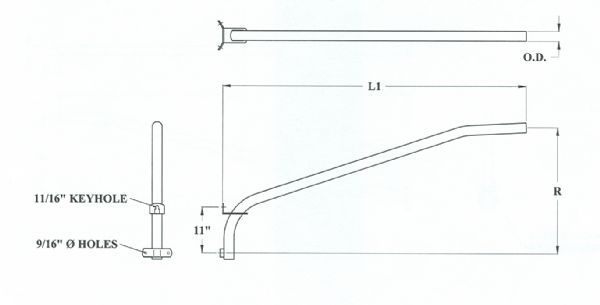
A streetlight arm is from various components that ensure the stability and reliability o the installation. The components vary depending on specific design, manufacturer, intended application and local regulations and standards. The following are the main components of a streetlight arm.
- Arm pole – this is the main components of the streetlight arm which provides the primary support and rigidity to hold the light fixture.
- Mounting plate – this serves as a connection point for light fixture to provide a secure platform for mounting the light fixture.
- Adjustable swivel joint – the swivel joint mechanism allows for angular adjustment of the light fixture. This allows for fine tuning the lighting direction and angle to achieve desired lighting coverage.
- Wiring channel – a wiring channel provides a pathway for electrical wiring that connects the light fixture to the power source.
- Fasteners – bolts, nuts, washers or clamps secure the arm to the support structure to ensure s strong and secure attachment.
- Protective coating – the protective coats on the arms enhance durability and weather resistance. They prevent corrosion, rust and other forms of degradation.
Types of streetlight arms
There are various types of streetlight arms designed to accommodate different requirements and lighting configurations. The type of streetlight arm selected should meet the specific lighting requirements, installation constraints and visual aesthetics of the project. Also, they should comply with the local regulations and standards. The following are the common types of streetlight arms.
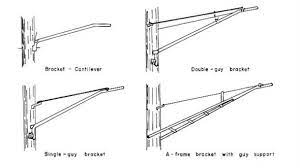
Straight arm – this is the most basic streetlight arm used when the light fixture needs to position directly above the road or sidewalk.
Swivel arm – these features a joint swivel mechanism that allows for angular adjustments of the light fixture.
Decorative arm – these types are to add aesthetic appeal to the lighting installation.
Outreach arm – these work when the light fixture needs to position away from the vertical pole. They provide greater reach and clearance to position the light fixture over roads, parking lots or specific areas.
Multiple arm – multiple arms support multiple light fixtures from a single pole to allow for illumination of a larger area.
Applications of a streetlight arm
Streetlight arms work in various lighting applications to provide support for streetlight. Consider the desired lighting level, coverage area and visual aesthetics when selecting streetlight arms. The streetlight arms should also comply with local regulations and standards. This helsp to ensure proper lighting and safety standards. The following are the common application areas of the streetlight arms.
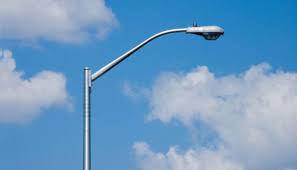
- Urban beautification – decorative arms work in aesthetic purposes to enhance the visual appeal of streets and centers.
- Commercial and industrial areas – streetlight arms provide lighting for outdoor spaces such as loading docks, warehouses and factories.
- Pathway and walkway lighting – streetlights work in parks, gardens and public pathways. They provide illumination along walking paths, jogging tracks or bike lanes.
- Street lighting – streetlight arms hold the light fixtures at the appropriate height and angle. This helps to illuminate roads, intersections and pedestrian pathways.
- Residential lighting – arms work in residential areas for lighting such as in driveways, walkways or outdoor living spaces for improved visibility and security.
- Outdoor recreational centers – streetlight arms help to illuminate sports fields, playgrounds or tennis courts. They provide adequate lighting for activities during evening hours.
Best practices for installing streetlight arms
Installation of streetlight arms should meet specific requirements, local regulations and safety guidelines. Some manufacturers offer installation instructions regarding the specific components used. Additionally, it is advisable to consult with industry professionals for guidance on the process. The following is a basic installation process for the streetlight arms.
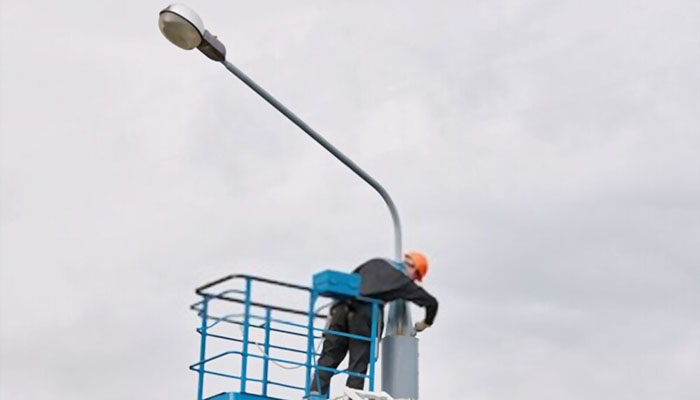
- Determine the best locations for the arms based on the lighting requirements and desired coverage area.
- Gather all the tools required for the installation such as streetlight arms, mounting hardware and a ladder for lift access.
- Position the streetlight arms at the desired locations on the supporting structure and ensure the arms align correctly and will provide the desired lighting coverage.
- Align the mounting holes on the streetlight arms with the drilled holes on the poles then insert the appropriate bolts, nuts and washers through the mounting holes. Ensure the arms are firmly and securely attached to the pole or support structure.
- Mount the light fixtures onto the arms using the provided mounting brackets.
- Connect the electrical wiring from the light fixtures to the power source or electrical distribution system following the suitable wiring and safety guidelines.
- Conduct a thorough inspection of the entire installation and check for proper alignment, secure attachment and ensure all connections are secure.
Selecting the best streetlight arms for your application
There are several factors to consider when selecting the best streetlight arms for your application. The streetlight arm should meet the specific requirements of the lighting installation. Additionally, it is advisable to consult with lighting professionals, engineers or suppliers for guidance on the specific requirements of your project. The following are the factors to consider when selecting the best streetlight arms.
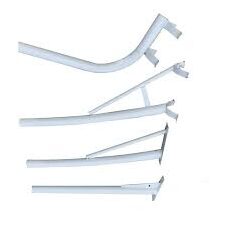
- Evaluate the cos of the streetlight arm and how it fits within the project budget. Consider the durability, adjustability, and reputation of the manufacturer.
- Ensure the streetlight arm complies with the relevant industry standards and local regulations to meet specific performance, safety and electrical standards for reliable and safe operation.
- Evaluate the construction and durability of the streetlight arm which should be from high-quality materials to withstand outdoor conditions and support the weight of the light fixtures.
- Ensure the streetlight arm is compatible with the light fixtures and poles by considering factors such diameter and type of pole, weight and size of the light fixture.
- Consider the specific application and lighting requirements of the project. Determine the desired coverage area, light distribution and mounting height.
- Consider the visual aesthetic of the streetlight especially if it will be visible to the public.
Frequently asked questions
A streetlight arm is a component of a streetlight system that holds the light fixture at a specific height and angle. It is also known as a streetlight bracket or a streetlight pole arm.
There are several benefits of the streetlight arm that lie in energy efficiency, safety, compatibility, ease of maintenance, aesthetic appeal, flexibility, proper lighting and increased lighting coverage. They help achieve efficient and effective outdoor lighting and enhancement in various applications.
Streetlights offer several benefits that help in increasing efficiency, and reliability. They also have several limitations that include mounting space, weight and load capacity, wind resistance, maintenance challenges, aesthetic limitations, installation complexity and cost considerations. Consider these limitations when selecting the streetlight arms.